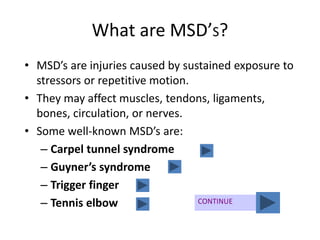Human factors and ergonomics aims to optimize human well-being and overall system performance through the study of physical, cognitive and organizational ergonomics. Physical ergonomics focuses on musculoskeletal injuries that can result from repetitive motions or sustained postures. Cognitive ergonomics examines how human perception, memory and decision-making influence interactions within a system. Organizational ergonomics seeks to optimize the structure, policies and processes of sociotechnical organizations.








































